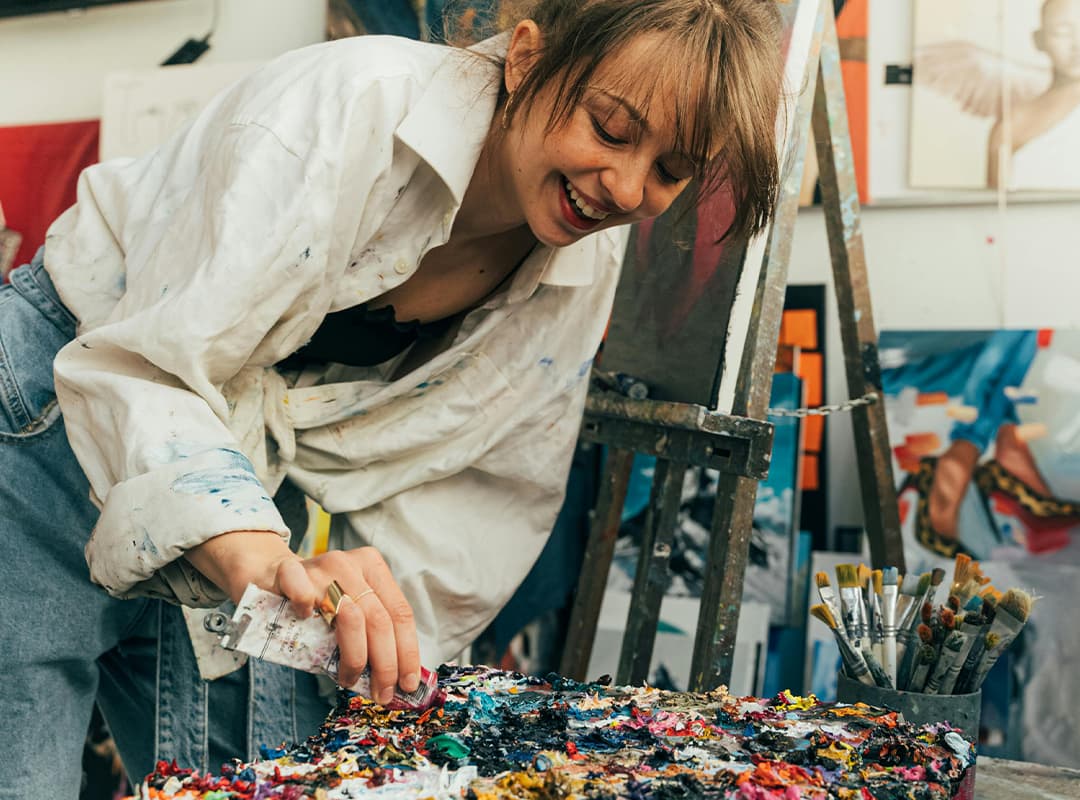In today’s digital age, social media has become an indispensable tool for promoting contemporary art galleries. As platforms like Instagram, Facebook, and Twitter continue to grow in popularity, galleries are increasingly leveraging these channels to engage with audiences, showcase exhibitions, and build vibrant communities. This article explores the crucial role social media plays in the promotion of contemporary art galleries, highlighting its impact on visibility, audience engagement, and the overall art experience. One notable example of artistic creativity that often garners attention on social media is the whimsical bumble bee blanket, which illustrates how art can transcend traditional boundaries.
1. Enhancing Visibility and Reach
Social media allows galleries to reach a wider audience beyond their physical locations. With millions of users globally, platforms like Instagram serve as virtual galleries where art can be shared, liked, and commented on, attracting potential visitors and collectors. Galleries can showcase their exhibitions through high-quality images and videos, providing a preview of what visitors can expect.
For instance, a gallery featuring an exhibition on innovative textiles might post striking visuals of art pieces, including unique creations like the bumble bee blanket. This not only highlights the artistry involved but also sparks curiosity and encourages viewers to visit the gallery in person.
2. Building Community and Engagement
Social media fosters a sense of community among art lovers, artists, and galleries. By sharing posts and engaging with followers, galleries can create a two-way dialogue that enhances viewer engagement. This interaction can take many forms, such as responding to comments, sharing user-generated content, or hosting live Q&A sessions with artists.
Galleries can also collaborate with influencers and art advocates on social media, further expanding their reach. By featuring guest posts or hosting joint events, they can attract new followers and create a more dynamic online presence.
3. Promoting Events and Exhibitions
Social media is an effective platform for promoting upcoming exhibitions, openings, and events. Galleries can create event pages, share countdowns, and provide behind-the-scenes glimpses to build anticipation. Utilizing stories and live broadcasts allows galleries to connect with their audiences in real time, making them feel part of the artistic journey.
For example, a gallery preparing for an exhibition on textile art might create buzz around the opening by sharing posts about featured works, such as the playful bumble bee blanket, to attract attendees who appreciate unique artistic expressions.
4. Showcasing Artists and Their Stories
Highlighting the artists behind the works is essential in creating a personal connection with the audience. Social media provides an excellent platform for galleries to share artist interviews, studio visits, and behind-the-scenes content that showcases the creative process.
By telling the stories of artists, galleries not only promote their work but also foster a deeper understanding of the concepts and inspirations behind the art. This narrative-driven approach enhances the viewer’s appreciation and creates a more immersive art experience.
5. Engaging with Diverse Audiences
Social media platforms enable galleries to engage with a diverse audience, reaching individuals from various backgrounds, cultures, and demographics. This inclusivity enriches the art community and encourages broader conversations about contemporary art practices.
Galleries can tailor their content to resonate with different segments of their audience, whether through highlighting emerging artists, showcasing community projects, or featuring works that address current social issues. This approach not only fosters inclusivity but also encourages a broader appreciation for contemporary art.
6. Utilizing Analytics for Insights
One of the key advantages of social media is the ability to track engagement metrics and audience behavior. Galleries can analyze data from their social media channels to gain insights into what content resonates with their audience, informing their future marketing strategies.
By understanding which posts generate the most engagement, galleries can refine their approach, ensuring that they effectively communicate their message and promote their exhibitions to the right audience.
Conclusion: A Transformative Tool for Contemporary Art Galleries
Social media has transformed the way contemporary art galleries promote themselves and connect with audiences. By enhancing visibility, building community, and engaging with diverse audiences, social media serves as a powerful tool for galleries seeking to thrive in the modern art landscape.
As galleries continue to navigate this digital terrain, they must embrace the opportunities that social media presents. Showcasing artistic creativity, whether through a stunning exhibition or unique pieces like the bumble bee blanket, allows galleries to connect with art lovers on a deeper level, fostering a vibrant and inclusive art community.
In this ever-evolving landscape, the role of social media in promoting contemporary art galleries will only continue to grow, shaping the future of how art is experienced and appreciated worldwide. By leveraging these platforms, galleries can ensure they remain relevant and accessible in an increasingly digital world.



